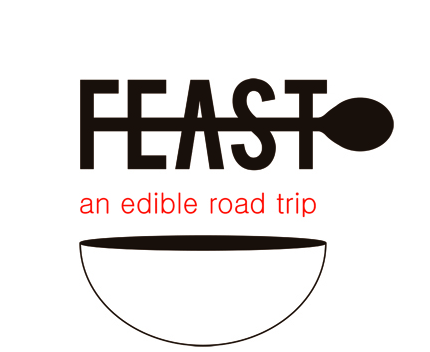Rankin Inlet Healing Facility & a Caribou Concoction
While in Rankin Inlet, we visited the territory’s new low to medium security correctional centre for men - the Rankin Inlet Healing Facility. Why, on a food-centric road trip, would we be visiting a correctional facility? Well, everyone’s gotta eat (as my grandfather says “if you don’t eat, you’ll fall apart!”), and as it turns out, there’s a pretty interesting story to be told about the Healing Centre’s cafeteria.
The general manager, Troy Rauhala, gave us a brief tour of the facility before showing us the kitchen. We were not able to take pictures of the interior for privacy reasons, but we did get to chat with the centre’s group of cooks, some of whom are from the area, while others hail from Ontario and the Maritimes. The programming at the centre is designed to help the offenders emerge and re-enter as functional members of society, which is part of the reason it’s called a ‘healing centre’ rather than a prison. The facility’s food plan represents a huge part of the facility’s mission, and points to the type of care the inmates receive. All of the chefs prepare meals from scratch, rather than from frozen or highly processed foods, and country food is also served at least once per week. It’s prepared by Harry, a young Inuk employee from Rankin; he and Rauhala talked at length about the calming affect this food has on the residents, and how it drastically changes their demeanor. Providing the men with comforting meals they were raised on is just one part of the facility’s more holistic approaches to betterment.
Our visit to the healing centre also meant we got to try another version of caribou: frozen and raw, apparently a well-loved hangover cure. What would you use to condiment such an interesting piece of meat? Mayo? Mustard? No. The condiment of choice, and the one offered to us, was fermented whale blubber. To ferment whale blubber, you simply put it in a can with a few holes in the lid and let it sit for four days. Through the fermentation process, the blubber turns into a sort of liquid, and becomes much, much funkier in flavour.
Everyone was pretty surprised at our eagerness to try the dish, but how could we ever forgive ourselves if we didn’t? We each grabbed a cube of frozen raw caribou, and dipped it in the aromatic vat of whale fat. The bite was small, but it immediately felt like my mouth was full. The strong flavour, the definition of ‘extreme pungency,’ just seemed to expand. We’ve since given the taste labels such as ‘humid’ or ‘sweaty.’
It’s definitely not something I would be thrilled to eat on a daily basis, but it’s the kind of flavour you can understand someone loving, had they grown up with it their whole lives. Though it doesn’t taste like it, it has the same kind of effect as a strong blue cheese, and I think it’s safe to assume most people do not emerge from the womb with a palate for blue mould; people acquire the taste for it through exposure. I think I’ll need a bit more fermented blubber in my life before I end up craving it.
Our experience with this fermented fat, and the halls of the centre, showed us again how important traditional food is in Inuit culture. We feel very lucky to have explored yet another diverse way of eating at a healing centre - that’s definitely a first.
What is your (or your family’s) favourite ‘acquired taste’ food?
-DV
